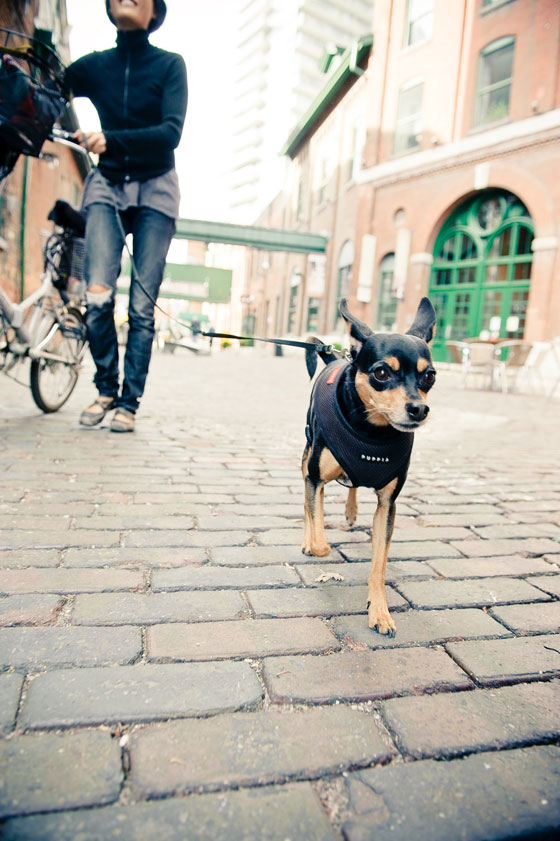My name is David Reyes and I am a dog lifestyle photographer. Here are some tips I find particularly useful when photographing the best friends in our lives.
For context, I use a Nikon d700 camera and shoot primarily with a 24-70 f/2.8 or my significantly abused 35 f/2.0. There are some non-technical tips here, so both dSLR and compact camera shooters should be able to take something away.
1. Use a fast shutter speed
Dogs are constantly in motion and since you can’t ask them to hold still while you snap a frame, you need a fast shutter speed to freeze them in mid-action. It could be something as small as freezing their tongue darting out to lick their nose or as grand as catching them in mid-jump to catch a stick.
The most common problem people run into with photographing pets is that they are blurry. The blurriness is usually not from camera shake (so image stabilization technologies like VR or IS won’t help much), but because your subject was moving too fast.

2. Use a higher ISO than you think
This goes towards achieving a fast shutter speed. Results with modern dSLRs, and especially those with a full frame sensor, are quite good so don’t be shy to bump up the ISO to higher than you might otherwise think necessary.
We have printed enlargements of 30” x 40” at ISO1600 that look spectacular. If you are intending to use your photos exclusively online, you can be even more aggressive with higher ISO levels. In almost all cases, a blurred subject is far more distracting than sensor noise could ever be.
3. Avoid onboard flash
We’re all familiar with the problems onboard flash has with red eye in people. With dogs and – especially – cats, this problem is magnified since their eyes have much larger openings to gather more light. Dogs and cats also have a layer of tissue behind the retina called the tapetum lucidum that acts like an internal mirror to let them capture even more light.

To prevent eyeshine (since the effect is not always red in animals) in your photos, don’t use your onboard flash. Most simply, you can use the sun directly or through a large window. If you have a camera with a directable flash head, you can aim your flash head up or to the side and bounce the light from the ceiling or wall.
The red eye reduction setting in cameras is usually ineffective since the pupil won’t close down enough to prevent eye shine; it also tends to freak your pet out with the rapid flashing.
4. Bracket for moments
We are now starting to move away from the technical aspects of photography here. Some photographers are familiar with bracket exposure – shooting a scene slightly underexposed, then properly exposed, then over exposed – in order to try to guarantee that they’ll hit the mark given tricky lighting conditions.
Because animals, even the most well trained, are unpredictable, you have to develop a sixth sense about when they do something you want to capture.
When you think something is about to happen, start shooting before the moment and keep shooting until you the moment has passed. When you get back home, you can pick out the one or two keeper images from that series.
Remember to be ruthless when choosing your keeper images – one or two absolutely amazing photos beats twenty mediocre images any day.

5. Get down low
Images shot from our eye level can be boring since it mirrors how we experience the world on a daily basis. Putting your camera down at your pet’s eye level makes for a much grander subject than shooting them from above. So don’t be afraid to put the camera on the ground, crawl through dirt, or wade through snow to get down to your subject’s level.
However, remember to take precautions to protect your camera in adverse conditions. I have dropped my camera in a field with knee-high snow with seemingly no ill effects, but a light flick of sand from a passing foot ruined a lens: you can never be too safe.
As many photographers have already learned, at the end of the day, nothing beats continual practice to improving your skill set. Fortunately, for pet owners, there is always a subject close at hand, ready to be photographed in exchange for a head scratch or belly rub.
always avoid on camera flash!!
Hi David, nice article and some good tips there.
Good tips about the ISO & Bracketing, I would have never thought to give that a try. I will now, and see what results I get. Thank you!